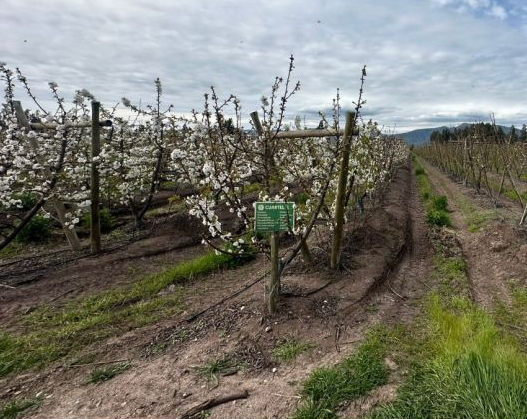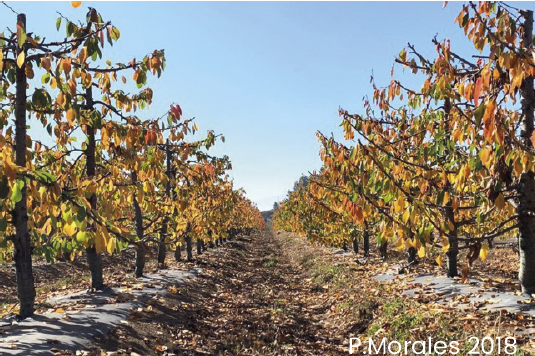From sun and rain protection to shielding against wind and bird damage, agricultural nets are becoming increasingly prominent in the most innovative cherry orchards in Washington State. Yet, their use remains niche.
In the heart of the arid inland Northwest USA, where some of the world’s sweetest cherries are grown, a select group of producers is betting on an invisible yet powerful ally: protective netting.
Shawn Gay, an innovative cherry grower in south-central Washington, has installed both structured and drape netting to protect his light-skinned cherry varieties like Rainier and Early Robin. “These are tools that can really make a difference,” he explains.
 Image 1. Trials with commercial nets—both structured and drape—cover Rainier cherries during harvest in June 2023 at Finley Cherries, northwest of Benton City, Washington. Growers are using nets to mitigate weather-related risks.
Image 1. Trials with commercial nets—both structured and drape—cover Rainier cherries during harvest in June 2023 at Finley Cherries, northwest of Benton City, Washington. Growers are using nets to mitigate weather-related risks.
A slow-moving revolution
According to Matt Whiting, a tree fruit physiologist at the Washington State University Tree Fruit Research Center in Prosser, this region enjoys ideal climatic conditions for cherry production. For decades, growers have chosen to live with the risk of adverse weather events—a late frost, a sudden heatwave, or poorly timed rain—rather than invest in protective solutions.
“For many, losing part of the crop in an unlucky year has always been acceptable,” says Whiting. The result? Other countries have surpassed states like Washington and Oregon in adopting so-called “protected culture”.
Most local producers still rely on treatments such as calcium or products like Parka and Vapor Gard to limit damage from rain or heat. To protect against wind, some plant more sensitive varieties within rows shielded by hardier cultivars.
“I don’t grow blond varieties. Just dark ones. Then I cross my fingers and pray it doesn’t rain,” says Jim Harris, a grower with three plots in the same region as Gay.
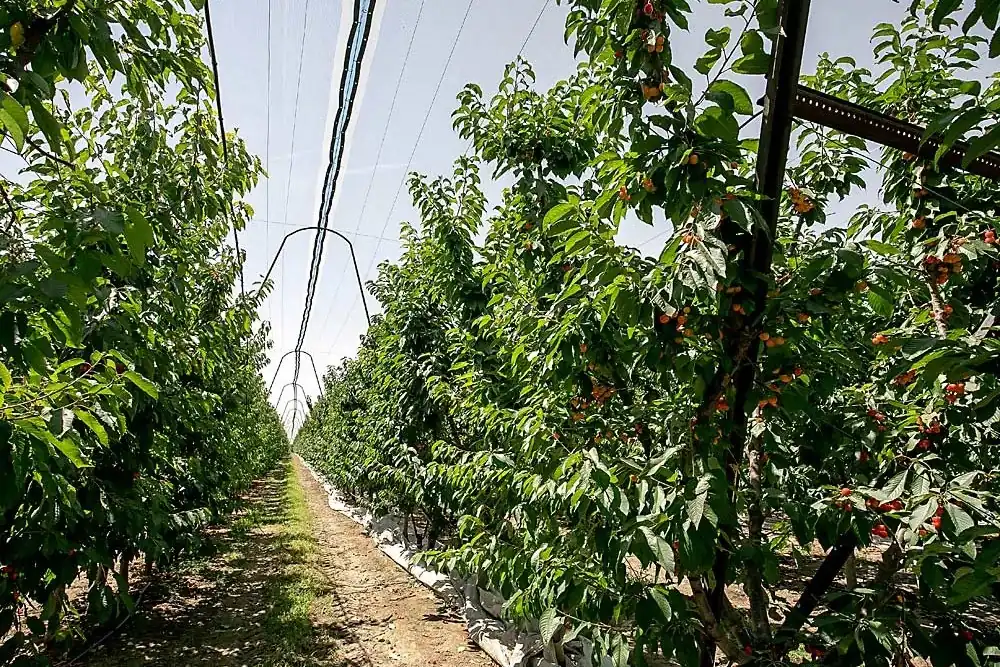 Image 2. Convinced of its value, Finley Cherries installs structured netting on flowering cherry trees when establishing new blocks.
Image 2. Convinced of its value, Finley Cherries installs structured netting on flowering cherry trees when establishing new blocks.
High cost, targeted benefits
Installing nets involves significant upfront investment, a deterrent during economically challenging years for many growers. Unsurprisingly, Whiting says most questions he receives from growers focus more on cost-cutting than introducing new technologies.
However, extreme events—like the record-breaking 2021 heatwave with temperatures reaching 46°C in June—have led some to change their strategy. Those who can afford it now combine shade nets, rain covers, windbreaks and overhead cooling systems.
Field experience
For his premium varieties, Gay uses a combination of structured nets and Drape Net, mainly to protect against wind. The system has also proven effective against sunburn, although it couldn’t mitigate the damage during the infamous 2021 “heat dome.”
In 2024, he decided to leave the nets up beyond harvest to see if they could protect defoliated trees from late-summer heat—a factor that can disrupt photosynthesis and cause non-marketable double fruits the following year. Preliminary results are promising.
Gay also observed a reduced need for irrigation, as the nets help maintain soil moisture.
Todd Wilmoth, owner of Cherry Ridge Farms, also uses rain covers to protect his Rainiers from cracking. The cover helps reduce sun damage but slows fruit coloring: “You have to pick the lesser evil,” he notes. For a small plot, he even installed a retractable greenhouse.
Others use nets primarily to deter birds while also benefiting from the shading effect. Apple Otte, from Tonasket near the Canadian border, reports a cooler feel even with wide-mesh nets, confirmed by anyone walking through the orchard.
In this cooler area, however, sun protection relies more on strategic pruning: fruits are positioned under leaves and branches for shade.
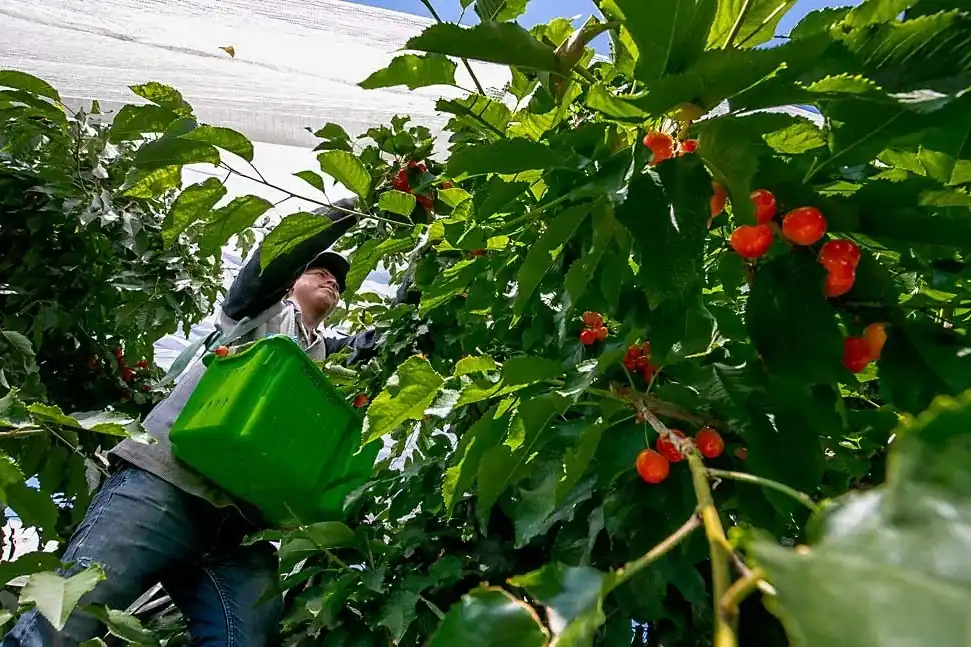 Image 3. Jose Vasquez harvests Rainiers under drape netting with raised sides to enhance coloring.
Image 3. Jose Vasquez harvests Rainiers under drape netting with raised sides to enhance coloring.
The (not so) crazy path of cooling
John Heffron, another grower from Sunnyside, has experimented with rain nets and tunnel greenhouses. However, the latter caused issues with pollination and excessive vigor.
He also tried overhead cooling while fruit was still hanging, using low water volumes (20–25 gallons per acre [approx. 75–95 liters per hectare]), which evaporated before being absorbed by the skin. “That way the fruit didn’t get too soft,” he says.
Heffron has since reduced his cherry acreage, but the technique remains in use post-harvest: some growers activate sprinklers or misters to lower temperature and promote healthy bud formation.
Reflective kaolin clay has a similar effect, but according to Whiting, water works better.
“Pre-harvest cooling? Sure, it sounds crazy—but it works,” concludes the scientist. In tests conducted at Prosser, even intentionally inducing splitting with water proved difficult. Previous studies have shown that overhead calcium chloride treatments can prevent rain-induced cracking. Among growers, however, the idea still gets skeptical smiles.
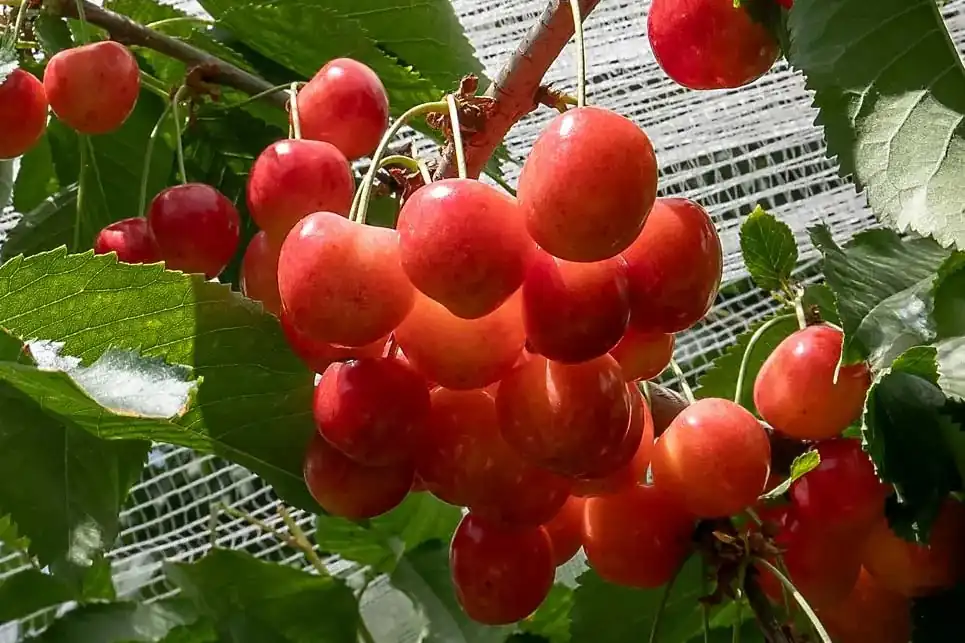 Image 4. A cluster of intact Rainiers awaits harvest under the drape netting that Finley Cherries uses to avoid wind damage, said owner Shawn Gay. The netting also shields the fruit from sunburn.
Image 4. A cluster of intact Rainiers awaits harvest under the drape netting that Finley Cherries uses to avoid wind damage, said owner Shawn Gay. The netting also shields the fruit from sunburn.
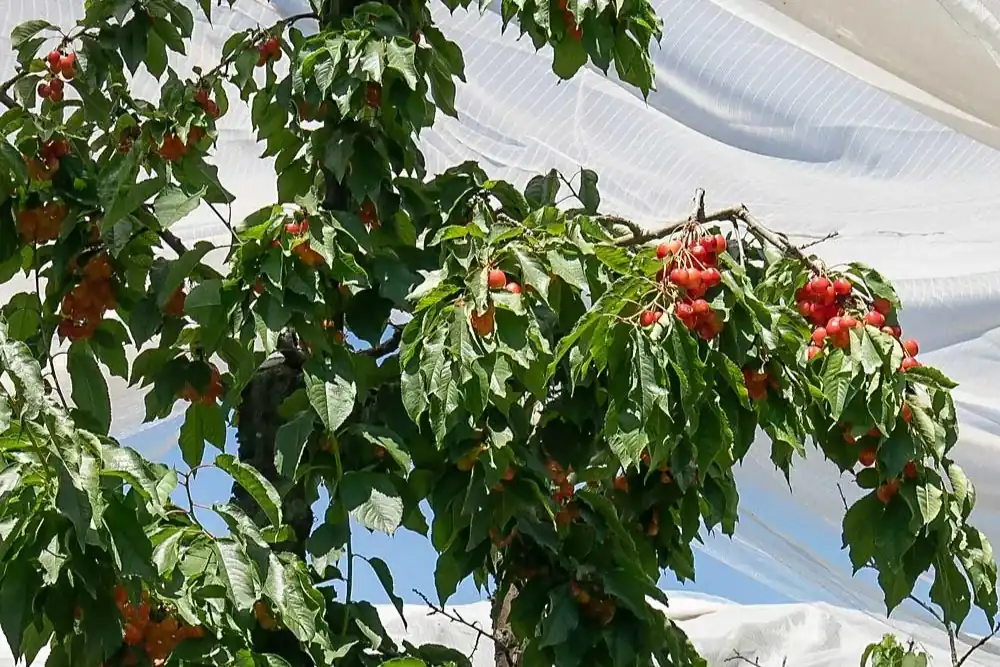 Image 5. Rain covers may cause issues such as limb breakage and abrasion of outer fruit when pulled, but the improved protection from wind and sun outweighs these concerns, Gay said.
Image 5. Rain covers may cause issues such as limb breakage and abrasion of outer fruit when pulled, but the improved protection from wind and sun outweighs these concerns, Gay said.
Physical protection for cherries could be a game changer—especially for high-value varieties. Nets aren’t a universal fix, but they offer a viable tool to address an increasingly unpredictable climate. And in the Northwest orchards, some are already weaving the future.
Source: goodfruit.com
Cover image source: SL Fruit Service
Inline image source: Good Fruit Grower
Cherry Times – All rights reserved










